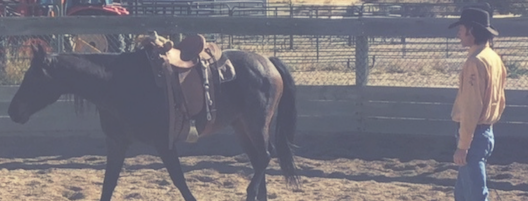How Subtle Do You Speak Horse?
So much of the way that I work with and around horses is tied to how I carry myself around them. I carry myself a certain way because I know how closely they are watching. Not to say that every little thing I do is going to induce a response. What I am saying is that knowing what I want before I start toward my horse determines how I approach them.
Let’s say I want my horse to stay calm and quiet while I approach, I would then carry myself with a calm and quiet disposition. This says to the horse that there is no need to make arrangements to move. I can then come in close, to rub on or pet him.
My body language told him what was going to happen.
I’m confident that if you’ve spent much time around horses that you have a pretty good understanding of this. You know not to run up to them yelling and jumping while expecting them to remain calm.
This is the base foundation for beginning to understand what body language says to a horse.
It is their sole way of communicating between other horses. It is truly how they "speak" to each other. I remember a clinic that I had attended of Peter Campbell's. He spent some time talking on this subject, trying to convey to us the need to learn how to "speak horse". I have since been trying to become fluent in this language.
In relating this back to groundwork, positioning and energy in one's movements says a lot to a horse. By adjusting and varying the two, we can communicate our desired response to our horses. I use this all the time in my groundwork.
As an example let's say that I am working a horse at liberty (without a halter and lead) in the round pen. For starters, I do not like a horse to feel the need to walk off as soon as I remove the halter.
A green/uneducated horse may feel the need to move when the halter comes off, but I quickly build into them a willingness to wait on me by going with them at first. After repeating this excercise several times, without troubling them, a horse will learn to stand.
As I remove the halter I stand calmly and quietly, expecting the horse to mirror my energy.When I am ready for the horse to move off I position myself behind the shoulder and build upon my energy. At the most subtle level I will expand my personal energy field until it is just pushing on the horse.
If this is not enough to drive them forward I will gently wave an arm to encourage movement.
I build upon the energy of waving my arm if they have failed to move, and as a last resort, I may physically make contact with them.
Once a horse is moving I need to maintain a certain amount of outward energy to keep them going around. If my feet are stopped and my expansive energy has dwindled, a horse will also stop. By varying my position in regards to my horse I can have them turn inside across the middle or outside towards the fence.
I also have the ability to speed them up or slow them down. My body language communicates to them what is expected. By being consistent with our body language a horse will learn to understand our subtleties.
We can begin to do less and less to have a horse understand.
I am always amazed at how subtle a cue can be to induce a response. In the beginning with a green horse, a cue may go undetected. The cue is in essence a new word to the horse.
Over time they begin to understand your vocabulary. They no longer will need a complete sentence to understand. One word will begin to be all it takes to elicit the desired response.
Think on this yourself. Can you speak horse? What does your body language convey? Are you aware of what your actions are telling your horses? Can you communicate more clearly with small variations in your approach?
Don't forget to listen.
Happy Trails!
Eric
